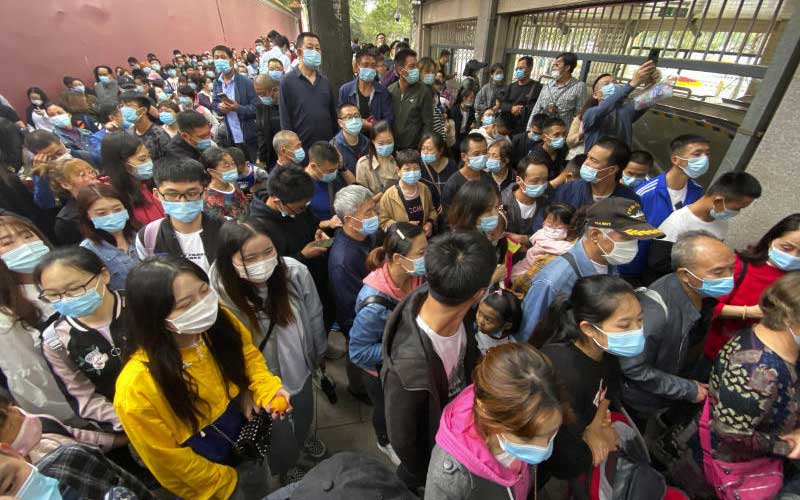
Tourists wearing masks to protect from the coronavirus line up for security checks before visiting the Tiananmen Square area in Beijing on Thursday, Oct. 1, 2020. Some 637 million Chinese tourists took domestic trips during the 8-day long Golden Week holidays, spending billions as China looked to boost consumer-led spending to stimulate the economy. [AP]
This past week, over 600 million Chinese nationals took to the roads, train stations and airports to celebrate the Golden Week holiday, in yet another demonstration of the anti-epidemic strides Beijing has made against the Covid-19 global pandemic.